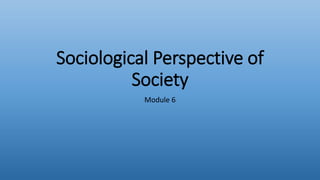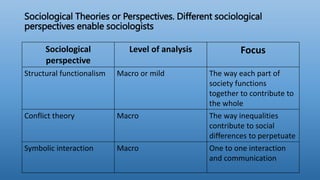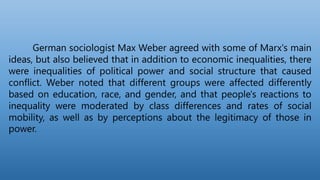Sociological perspectives focus on understanding social groups and society. There are three main perspectives: structural functionalism looks at how social institutions work together to maintain stability; conflict theory sees society as groups competing for limited resources which leads to inequality; symbolic interactionism examines how people interact and attach meaning to symbols through communication and interpretation during social interactions.












